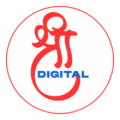
In today’s fast-paced digital world, first impressions are more important than ever. Whether it’s a logo, social media post, website, or product packaging—graphic design is at the heart of every brand’s identity and communication. It is the art and science of combining text, images, and visual elements to convey a message effectively. More than just aesthetics, graphic design is a powerful tool that can shape perception, create brand recall, and drive business success.
What is Graphic Design?
Graphic design is a visual communication process that involves the strategic use of typography, photography, iconography, and illustration to solve problems and communicate ideas. Designers work across both print and digital platforms, creating everything from billboards and brochures to websites, mobile apps, and motion graphics.
Graphic design combines creativity with logic, making it a unique discipline that balances artistic innovation with purposeful messaging.
Why Graphic Design Matters
1. Establishes a Strong Brand Identity
Your brand identity is how your business is perceived by your audience. A memorable logo, cohesive color scheme, and consistent design elements across all platforms help build recognition and trust. Think of iconic brands like Apple or Nike—their visual identity plays a key role in their global success.
2. Enhances User Experience
Great design isn’t just about looking good. It makes navigation easier, content more engaging, and messages clearer. Whether you’re designing a website or a social media post, good graphic design ensures users get the information they need with minimal friction.
3. Boosts Engagement and Conversions
Eye-catching visuals stop people from scrolling. Infographics, videos, and animated posts are proven to increase engagement, especially on social media. Graphic design can guide users’ attention and influence them to take action—like clicking a link or making a purchase.
4. Sets You Apart From the Competition
In saturated markets, design is a differentiator. A well-designed brand presence looks more credible and professional than one with inconsistent or outdated visuals. High-quality graphics give the impression of high-quality products or services.
Key Areas of Graphic Design
Graphic design is a broad field with many specializations. Here are some of the most in-demand areas:
1. Branding and Logo Design
The foundation of every company’s identity. This includes logos, brand color palettes, typography, and brand guidelines.
2. Web and User Interface (UI) Design
Designing the layout, appearance, and interactivity of websites, apps, and software platforms.
3. Print Design
Designs intended for physical distribution, such as brochures, posters, business cards, packaging, and billboards.
4. Social Media Graphics
From stories and posts to banners and advertisements—social graphics help brands communicate consistently and creatively across platforms.
5. Motion Graphics and Animation
Used in videos, presentations, and advertising to add dynamic visual interest and storytelling power.
Graphic Design Tools and Trends in 2025
The graphic design landscape is always evolving. In 2025, we’re seeing a rise in:
AI-assisted design tools (e.g., Adobe Firefly, Canva Magic Design)
3D elements in web design and advertising
Minimalist and clean designs for modern branding
Motion-based storytelling through short-form video and GIFs
Sustainable and eco-conscious design in packaging
Tools like Adobe Creative Cloud (Photoshop, Illustrator, InDesign), Figma, and Canva remain essential, empowering designers to create high-quality visuals quickly and efficiently.
Tips for Effective Graphic Design
Understand the Audience – Design with the target market in mind. What appeals to a Gen Z user may not resonate with a professional B2B audience.
Keep it Simple – Avoid clutter. Clear hierarchy and minimal design often outperform overly complex visuals.
Use Consistent Elements – Fonts, colors, and spacing should align across all design assets.
Stay Updated – Follow design trends and experiment with new techniques to stay relevant.
Prioritize Mobile – With mobile-first consumption, always design with responsiveness in mind.
The Role of a Professional Graphic Designer
While DIY tools are accessible, nothing beats the touch of a professional. Experienced designers bring a strategic perspective, design theory knowledge, and creative problem-solving to the table. Whether you’re launching a startup or refreshing a legacy brand, investing in professional graphic design ensures your message is both beautiful and effective.
At Shri Digital Marketing Agency, we offer end-to-end graphic design services tailored to your business goals—from logo creation to full-scale digital campaign design.
Conclusion
Graphic design is more than just decoration. It’s an essential part of how businesses communicate, attract, and retain their audience. From digital ads to physical print, every design choice contributes to your brand’s story and credibility. As visuals continue to dominate the digital landscape, investing in high-quality graphic design is no longer optional—it’s vital.
